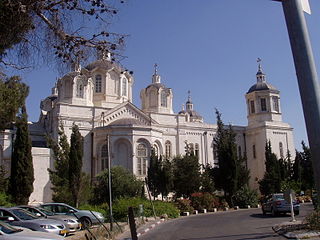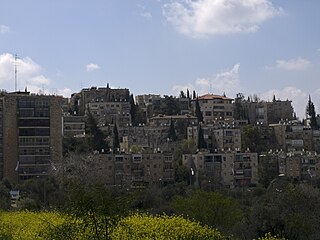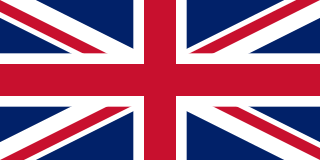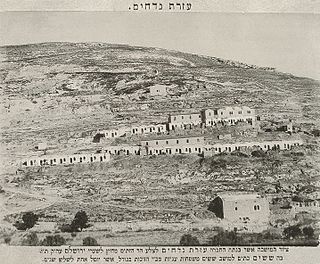
The British administrative headquarters for Mandatory Palestine, housed in the southern wing of the King David Hotel in Jerusalem, were bombed in a terrorist attack on 22 July 1946 by the militant right-wing Zionist underground organization the Irgun during the Jewish insurgency. 91 people of various nationalities were killed, and 46 were injured.

From 13–18 May 1948 Jewish forces from the Haganah and Irgun executed Operation Kilshon ("Pitchfork"). Its aim was to capture the Jewish suburbs of Jerusalem, particularly Talbiya in central Jerusalem.

The Rockefeller Archeological Museum, formerly the Palestine Archaeological Museum, and before then The Imperial Museum of Antiquities, is an archaeology museum located in East Jerusalem that houses a large collection of artifacts unearthed in the excavations conducted in Mandatory Palestine, in the 1920s and 1930s.

St Andrew's Church, also known as the Scots Memorial Church, is a church in Jerusalem built as a memorial to the Scottish soldiers who were killed fighting the Turkish Army during the Sinai and Palestine campaign of World War I, bringing to an end Ottoman rule over Palestine. It is a congregation presbyterian of the Church of Scotland.

Givat Shaul is a neighborhood in West Jerusalem. The neighborhood is located at the western entrance to the city, east of the neighborhood of Har Nof and north of Kiryat Moshe. Givat Shaul stands 820 meters above sea level.

Beit HaKerem is a largely secular upscale neighborhood in southwest Jerusalem. It is located between Kiryat Moshe to the northwest and Bayit VeGan to the south. Beit HaKerem has a population of 15,000.

The Russian Compound is one of the oldest districts in central Jerusalem, featuring a large Russian Orthodox church, the Russian-owned Sergei's Courtyard and the premises of the Russian Consulate General in Jerusalem, as well as the site of former pilgrim hostels, some of which are used as Israeli government buildings, and one of which hosts the Museum of Underground Prisoners. The compound was built between 1860 and 1890, with the addition in 1903 of the Nikolai Pilgrims Hospice. It was one of the first structures to be built outside the Old City of Jerusalem.

Jaffa Road is one of the longest and oldest major streets in Jerusalem. It crosses the city from east to west, from the Old City walls to downtown Jerusalem, the western portal of Jerusalem and the Jerusalem-Tel Aviv highway. It is lined with shops, businesses, and restaurants. It joins with Ben Yehuda Street and King George Street to form the Downtown Triangle central business district. Major landmarks along Jaffa Road are Tzahal Square, Safra Square, Zion Square, Davidka Square, the triple intersection (Hameshulash) at King George V Street and Straus Street, the Ben Yehuda Street pedestrian mall, the Mahane Yehuda market, and the Jerusalem Central Bus Station. Jaffa Road has been redeveloped as a car-free pedestrian mall served by the Jerusalem Light Rail.
Beit Ula, Beit Aula, is a Palestinian town in the Hebron Governorate of the State of Palestine, located ten kilometers northwest of Hebron, in the southern West Bank.

Kiryat Shmuel is a neighborhood in central West Jerusalem founded in 1926. It is named for Rabbi Shmuel Salant, the Ashkenazi Chief Rabbi of Jerusalem in 1878-1909. Kiryat Shmuel is located between Rehavia and Katamon.

Auja al-Hafir, was an ancient road junction close to water wells in the western Negev and eastern Sinai. It was the traditional grazing land of the 'Azazme tribe. The border crossing between Egypt and Ottoman/British Palestine, about 60 km (37 mi) south of Gaza, was situated there. Today it is the site of Nitzana and the Ktzi'ot military base in the Southern District of Israel.

King George Street is a street in central Jerusalem which joins the famous Ben Yehuda Street and Jaffa Road to form the Downtown Triangle central business district. The street was named in honour of King George V on December 9, 1924.

Austen St. Barbe Harrison (1891–1976) was a British-born architect. While British, Harrison spent most of his career overseas, and mainly in the Middle East. His works include the British Representative's Residence, Amman, the High Commissioner's Residence, Jerusalem, the Rockefeller Museum, Jerusalem, 1935, and Nuffield College, Oxford.

Events in the year 1938 in the British Mandate of Palestine.

The Old Yemenite Synagogue, known to its congregation as Beit Knesset Ohel Shlomo, is a restored synagogue from the nineteenth century Yemenite Village, the Kfar Hashiloach neighborhood in the Jerusalem district of Silwan.

Mandatory Palestine was a geopolitical entity established between 1920 and 1948 in the region of Palestine under the terms of the League of Nations Mandate for Palestine.

Sha'arei Yerushalayim is a former courtyard neighborhood in western Jerusalem. It is one of a series of courtyard neighborhoods built along Jaffa Road in the late 19th and early 20th centuries, together with Ohel Shlomo and Batei Saidoff. Today it is considered part of the Mekor Baruch neighborhood.

The Generali Building is a landmark office and commercial building on Jaffa Road in West Jerusalem. Designed by Marcello Piacentini, chief architect of the Italian Fascist regime, it served as the Jerusalem branch of the Assicurazioni Generali insurance company from 1935 to 1946. In 1946 the British Mandatory government nationalized the building and enclosed it and several other structures at the eastern end of Jaffa Road in a fortified security zone. With the end of the Mandatory government in 1948, the building was taken by the Irgun. Since the establishment of the state, the Generali Building has housed the offices of the Jerusalem District Administration and other government agencies, and street-level stores. The building's neoclassical and modern architecture, and large, rooftop sculpture of a Lion of Saint Mark have made it a prominent landmark in downtown Jerusalem.
The Department of Antiquities was a department of the British administration of Mandatory Palestine from 1920 to 1948 that was in charge of the protection and investigation of archaeological remains and artefacts in Palestine.
The Survey of Palestine was the government department responsible for the survey and mapping of Palestine during the British mandate period.



















